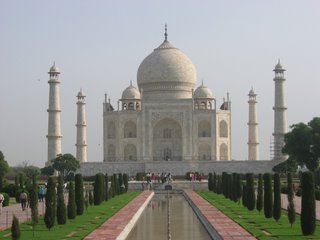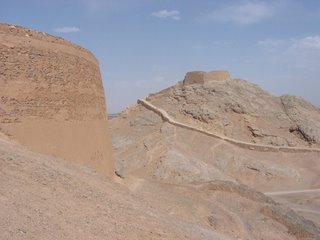Varanasi adorns the bank of the Ganges, India's holy river, and there are few other reasons for visiting, beyond a couple of ok temples one of which contains a giant marble map of India (which is well worth seeing).
One redeeming feature was the hotel that we stayed in, which is one of the nicest we have used thus far, with an excellent and welcome pool. The weather has turned mercifully cooler, and we have had the first concerted rain here that we have seen.
Despite the weather the main attraction here is to take a boat trip on the Ganges; this is not your normal pleasure cruise, however. As I mentioned the Ganges is a holy river, and Indians treat it so along with using it for just about every purpose that a river can be used for. On an early morning boat trip along the banks of Varanasi you will be greeted with people washing, both themselves and their clothes, swimming, fishing, performing holy rituals and, most spectacularly burning and disposing of their dead. Funeral ghats, present in most cities, positively queue up along the banks of the Ganges and operate, it would seem, on a constant basis. It is a strange sight to look through the early morning haze and see a line of fires reaching into the distance each of which is probably an individual funeral. Sadly the burning is not always as comprehensive as perhaps it should be, depending on the amount of wood than can be afforded by the individual's family, and as a result it is not uncommon to see the remains of half cremated bodies adorning the shores of the sand-bar on the opposite side of the river or floating past your boat. The corpses of other creatures along with the normal flotsam of human existence are not an uncommon sight either.
All combined the activities that take place on the banks of this river (including and probably predominantly because of those of an industrial nature) are contributing to making it a form of polluted soup. How people swim in these waters and stay healthy is beyond me, but they do. I can only assume that the immune systems of Indians in this region are Olympian in stature. Having said that there are allegedly dolphins living in the Ganges which must say something of the water quality... You can draw your own conclusions.













































